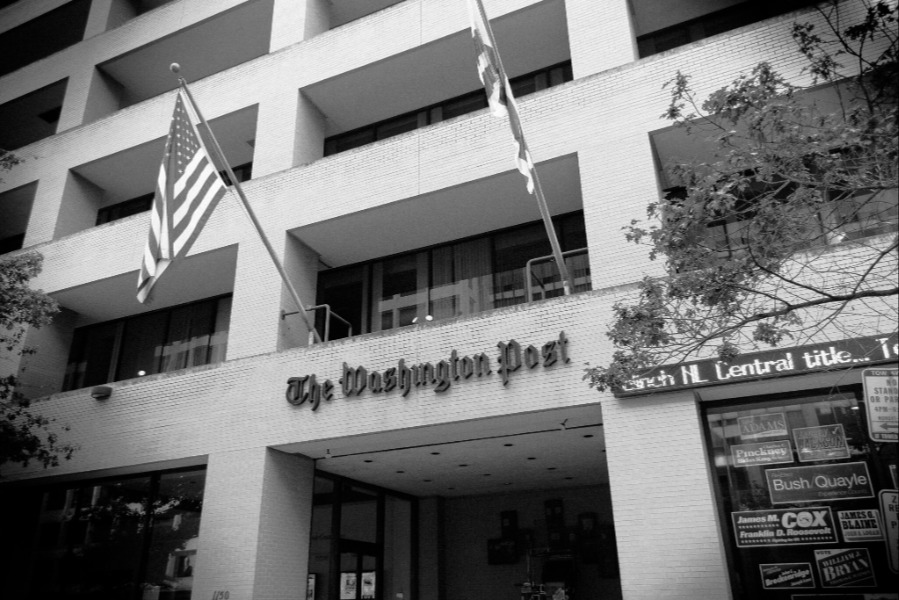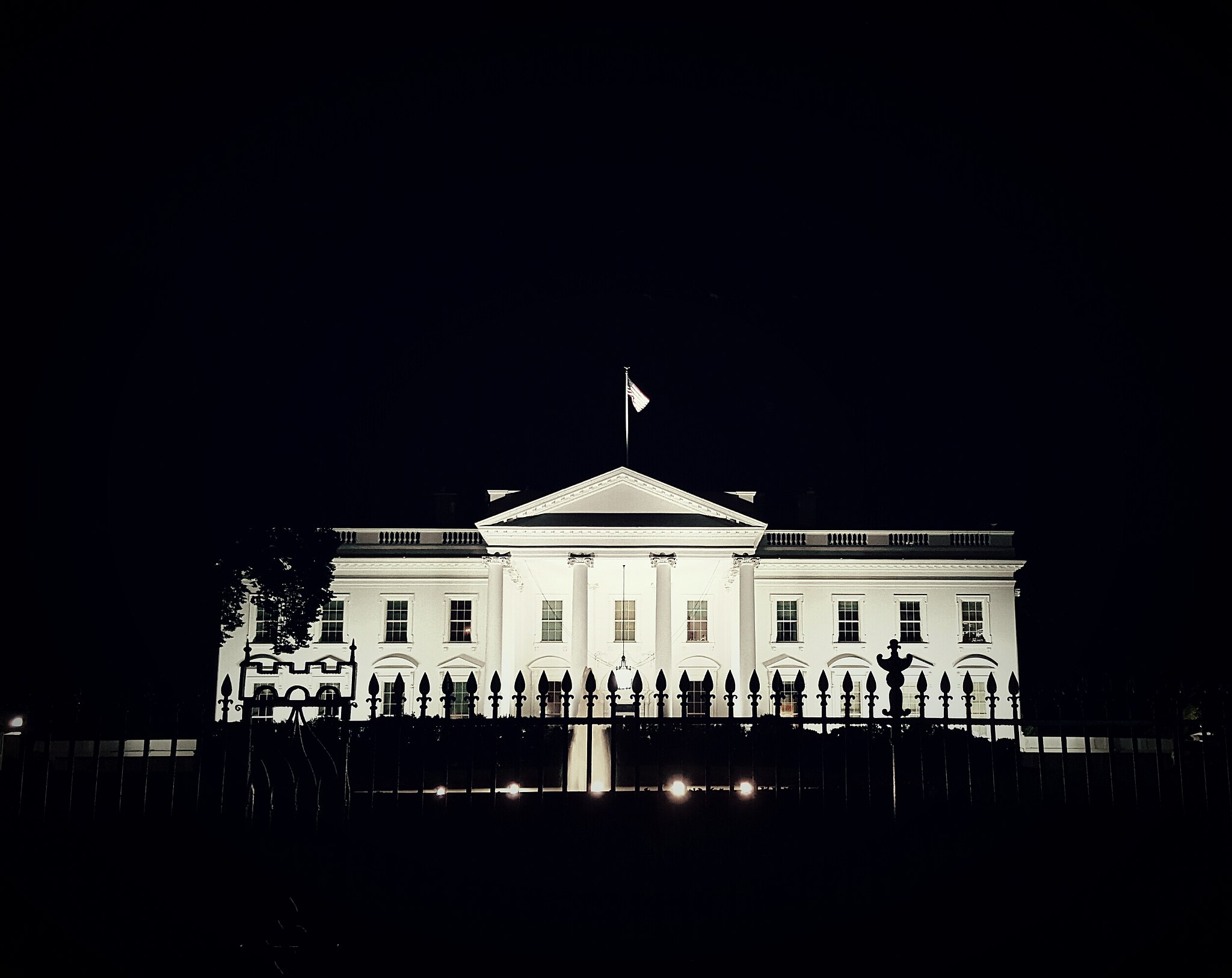Is Steve Bannon’s Role on the National Security Council Actually Unprecedented?
In response to outcry over President Trump’s reorganization of the National Security Council—and particularly Steve Bannon’s elevation to the NSC and his permanent invite to the NSC’s Principals Committee—Senator Mark
Published by The Lawfare Institute
in Cooperation With

In response to outcry over President Trump’s reorganization of the National Security Council—and particularly Steve Bannon’s elevation to the NSC and his permanent invite to the NSC’s Principals Committee—Senator Mark Warner (D-VA), the ranking Democrat on the Senate Select Committee on Intelligence announced that he was introducing a bill to codify and strictly limit NSC membership. According to Sen. Warner’s press release, the bill, titled the Strengthening Oversight of National Security Act, pursues three goals:
- Codifying the National Security Council’s composition, including adding the Director of National Intelligence and Chairman of the Joint Chiefs of Staff;
- Mandating any NSC interagency committee reflect Senate-approved NSC membership with flexibility to add other Senate-confirmed members;
- Requiring congressional consent to add any non-Senate confirmed official except the National Security Advisor and Deputies, Homeland Security Advisor and Deputies, Chief of Staff, White House Counsel, National Economic Council Chairperson, Economic Policy Advisor, and the Vice President’s National Security Advisor.
Many, including Warner, staunchly believe that Steve Bannon should not be allowed to sit on the Principal’s Committee or exert influence over the National Security Council as a policy matter. Those objections are based on both Bannon’s role as a political strategist and because his personal worldview and recent actions alarm many people across the ideological spectrum on national security grounds. Now, Senator Warner seeks to create a legal bar as well.
|
If you are finding Lawfare useful in these times, please consider making a contribution to support what we do. |
While impossible to determine without actual legislative text, it is possible that the kind of bill Warner describes could raise separation of powers issues. For now, as some have observed, while NSC membership is dictated by statute, attendance is up to the President.
Even so, many, including former Acting Director of the CIA Michael Morell, have called Bannon’s permanent invite “unprecedented.” Bannon’s new role, in conjunction with Warner’s responsive bill, prompts important questions of the NSC’s development.
Below is a brief overview of each President’s NSC and NSC subgroups to show the ever-evolving nature of the National Security Council and an examination of how unprecedented Bannon’s formal role actually will be. Our historical review of the NSC relies heavily on “The History of the National Security Council: 1947-1997,” by the State Department’s Office of the Historian; Flawed by Design: The Evolution of the CIA, JCS, and NSC, by Amy Zegart; Running the World: The Inside Story of the National Security Council and the Architects of American Power, by David Rothkopf; and Fateful Decisions by Loch Johnson.
***
Truman Administration
In 1947, the United States was one of two dominant superpowers on the global stage. Congress created the National Security Council through the National Security Act of 1947, to “advise the President with respect to the integration of domestic, foreign, and military policies relating to the national security.” The NSC—slightly modified in a 1949 amendment—was comprised of the
President; Vice President; Secretary of State; Secretary of Defense; Chairman of the National Security Resources Board (NSRB); and The Secretaries and Under Secretaries of other executive departments and of the military departments, the Chairman of the Munitions Board, and the Chairman of the Research and Development Board, when appointed by the President by and with the advice and consent of the Senate, to serve at his pleasure.
Truman was hesitant to accept Congressional intrusion into his decision-making and kept the NSC at arm’s length upon its creation, relying heavily on informal advisors and the State Department for guidance. After the start of the Korean War however, Truman attended just about every meeting and strictly adhered to the statutory membership and excluded others, including political advisers. The lone exception to this was when President Truman invited the Director of the Bureau of the Budget (now the Office of Management and Budget) to attend meetings when fiscal analysis was required, according to historian Stanley Falk.
Eisenhower Administration
President Eisenhower, in contrast to Truman, embraced the NSC process, tailoring it to his desire for strict organization and careful planning based on his military background. Throughout the Eisenhower Administration, the NSC’s statutory members remained the same, though the NSRB Chairman was replaced with the Director of Civil and Defense Mobilization upon the NSRB’s abolition. One of Eisenhower’s greatest impacts on the NSC was creating the Special Assistant for National Security Affairs position (referred to today as the National Security Advisor) and giving the position a seat at the NSC. Because the position was part of the formal staff, it was accepted by Congress.
The NSC under Eisenhower consisted of five statutory members, but many other senior Cabinet members and advisors were invited as well. The NSC structure provided “regular, full-staffed, interagency review of major foreign policy and national security issues,” under Eisenhower’s direction. Eisenhower also created the prototype “hill” (or pyramid) structure of the current NSC internal system. Executive Order 10483 established the Operations Coordinating Board, or OCB, which was responsible for implementing NSC actions. Importantly, neither the NSC nor OCB featured political advisors.
Kennedy Administration
Due to a scathing analysis of Eisenhower’s NSC, President Kennedy took a different approach to the NSC’s congregation. Nevertheless, it too excluded political advisors. Kennedy slashed the NSC’s staff and responsibilities, leaving coordination of foreign policy to the State Department.
The Kennedy administration abandoned the long-range planning of the Eisenhower administration in favor of ad hoc, intimate interagency working groups to handle crisis situations, such as the Standing Group that was composed of the Under Secretary of State for Political Affairs, the Deputy Secretary of Defense, the Director of Central Intelligence, and the National Security Adviser. Kennedy also abolished the OCB, instead relying heavily on the newly-created and more informal NSC Executive Committee—composed of the President; Vice President; Secretaries of State, Defense, and Treasury; Attorney General; Director of Central Intelligence; Under Secretary of State; Deputy Secretary of Defense; Chairman of the Joint Chiefs of Staff; and the National Security Advisor.
Through it all, there are no records of high-level political advisors, formal or informal, in President Kennedy’s national security apparatus.
Johnson Administration
According to the Congressional Research Service, having been thrust into the presidency upon Kennedy’s assassination and “need[ing] a show of continuity,” President Johnson formally maintained President Kennedy’s NSC apparatus. However, he “sought out advice from a number of sources other than the NSC . . . Johnson conferred constantly with a wide number of advisers within and outside government [on national security matters.]” Indeed, the formal NSC was left out of many of the major foreign policy decisions of the era. Johnson relied heavily on his National Security Advisors, with the informal Tuesday luncheon meetings largely taking the place of regular NSC meetings. This group included the press secretary, the Director of Central Intelligence, and the Chairman of the JCS, with secrecy that allowed for “extraordinary candor.”
When staying within the confines of the Administration, though, Johnson relied mostly on the State Department. NSAM 341, The Direction, Coordination and Supervision of Interdepartmental Activities Overseas, enhanced the State Department’s role in policy-making. That led to the establishment of the Senior Interdepartmental Group, “whose members were: the Under Secretary of State, Deputy Secretary of Defense, Administrator of the Agency for International Development, DCI, JCS Chairman, Director of the U.S. Information Agency, and the National Security Adviser.”
Nixon Administration
President Nixon’s NSC unsurprisingly adopted the basic form of his former running mate, President Eisenhower, and kept domestic political advisors outside the formal structure. NSDM-2, Reorganization of the National Security Council System, rescinded Johnson’s NSAM 341, established the NSC Review Group (to be trimmed down later under NSDM 85) and the NSC Under Secretaries Committee. President Nixon’s organization strongly resembles today’s structure, with a Review Group that largely aligns with the modern Principals Committee (Review Group), Deputies Committee (Committee), and Policy Planning Committees (working groups). Otherwise, President Nixon delegated much of the organizational decision-making to his National Security Advisor, Henry Kissinger, who chaired the Review Group. The NSC’s influence was further increased upon Kissinger’s appointment to Secretary of State while remaining National Security Advisor. However, throughout Nixon’s NSC, no political advisor was ever offered a formal invitation to the NSC or its sub-groups.
Ford Administration
President Ford’s NSC was, yet again, apolitical. Given that President Ford had little foreign policy experience before assuming the office, he did not change the NSC’s or Senior Review Group’s compositions and roles under NSDM 265 and NDSM 326, respectively. Instead, he chose to rely almost exclusively on Kissinger. While Ford did divest Kissinger of his role as National Security Advisor in favor of Brent Scowcroft, Kissinger still exercised effective control as Secretary of State. Ford’s minor change to the Council was the creation of three sub-committees via Executive Order 11905: National Security Committees on Foreign Intelligence, the Operations Advisory Group, and the Intelligence Oversight Board.
Carter Administration
Under President Carter’s NSC-2, the Council was again reorganized. It remained apolitical formally, but informally was another matter entirely. Including the statutory members, NSC-2 listed the individuals that “shall attend appropriate NSC meetings:” the Secretary of the Treasury, the Attorney General, the OMB Director, the Chairman of the Council of Economic Advisors, the Director of Central Intelligence, the Administrator of the Energy Research and Development Administration, and the Assistant to the President for National Security Affairs. NSC-2 also established the NSC Policy Review Committee, Special Coordination Committee, and Interdepartmental Groups, with these roles laid out in Executive Order 12036. The main story here is that, again, neither committee enjoyed chiefly political appointments. (It is noteworthy that by the end of the Carter Administration, the Senate held hearings and called for each member of the Security Council to be confirmed by the Senate.)
In practice, however, Carter typically used his Friday breakfasts as fill-ins for NSC meetings. Importantly to today’s discussions, these breakfasts were attended by the Vice President, Secretaries of State and Defense, the NSC Advisor, the chief domestic advisor, and several other advisors in attendance. No formal records were kept of the meetings, leading to differing interpretations of what was agreed on, but the attendance of domestic advisors to such meetings offer some historical precedent of their informal influence in NSC decision-making.
Reagan Administration
President Reagan’s NSC did not include domestic political advisors, but domestic advisors did play a distinct role. National Security Directive-2 (NSD-2), National Security Council Structure, channeled the NSC’s power in the Reagan White House toward the Secretary of State as well as created three Senior Interagency Groups (SIGs): Foreign Policy, Defense Policy, and Intelligence. Each SIG’s composition was slightly different, given the different aims of each group, but all were comprised of non-political, Senate-confirmed officials. But Reagan’s first National Security Advisor, Richard Allen, was not granted direct access to the President himself; instead, his influence was channel through the President’s Senior Advisor, Edwin Meese. Subsequent National Security Advisors however reported directly to President Reagan.
Reagan’s history with the NSC and his six National Security Advisors is rife with domestic controversy—Richard V. Allen was accused of bribery, Bud MacFarlane pleaded guilty to withholding information from Congress, and Vice Admiral John Poindexter was charged and convicted for lying to Congress “as part of an effort to conceal the Reagan Administration’s actions in the Iran-contra affair”—making it all the more noteworthy that Reagan did not elevate domestic political advisors to the NSC’s discussions. This history also spawned another important development: the appointment of legal counsel and the creation of a Policy Review Committee to replace the Crisis Pre-Planning Group.
George H.W. Bush Administration
Upon entering office, President Bush yet again tweaked the NSC’s composition to create the foundation of today’s NSC, but forewent the inclusion of political advisors. NSD-1 maintained much of President Reagan’s NSC roles but elevated the White House Chief of Staff to the Council. The Directive also created three sub-groups within the NSC: the NSC Principals Committee, the NSC Deputies Committee, and the NSC Policy Coordinating Committee. These Committees, like the entirety of the NSC, remained staffed by non-partisan security officials throughout Bush’s tenure.
Clinton Administration
Under President Clinton, Presidential Decision Directive/NSC-2 changed the NSC’s roster; despite the change, the NSC remained without domestic political advisors. NSC-2 provides:
The NSC shall have as its members the President, Vice President, Secretary of State and Secretary of Defense, as prescribed by statute. The Director of Central Intelligence and the Chairman, Joint Chiefs of Staff, as statutory advisers to the NSC shall attend NSC meetings. In addition, the new membership of the NSC shall include the Secretary of the Treasury, the U.S. Representative to the United Nations, the Assistant to the President for National Security Affairs, the Assistant to the President for Economic Policy, and the Chief of Staff to the President. The Attorney General shall be invited to attend meetings pertaining to his jurisdiction, including covert actions.
President Clinton kept President Bush’s Principals and Deputies Committees, again staffing each with a nearly identical roster of the relevant non-political members. Arguably Clinton’s most impactful NSC change was the creation and integration of the National Economic Council via Executive Order 12835, to address, according to CRS, “a need for closer integration of national security policy and international economic policy.” The NEC and NSC “forged an effective collaborative relationship across their respective jurisdictional lines,” said historian Paul Stockton. Notably, some posts within the NEC do not require Senate confirmation, including the Chairman (currently held by Gary Cohn), but this is a far cry from Bannon’s promotion.
George W. Bush Administration
President George W. Bush’s NSC, yet again, did not have domestic political advisors as standing attendees or invitees. President George W. Bush’s NSPD-1, Organization of the National Security Council System, named different people to the NSC:
the President, the Vice President, the Secretary of State, the Secretary of the Treasury, the Secretary of Defense, and the Assistant to the President for National Security Affairs. The Director of Central Intelligence and the Chairman of the Joint Chiefs of Staff, as statutory advisors to the NSC, shall also attend NSC meetings. The Chief of Staff to the President and the Assistant to the President for Economic Policy are invited to attend any NSC meeting. The Counsel to the President shall be consulted regarding the agenda of NSC meetings, and shall attend any meeting when, in consultation with the Assistant to the President for National Security Affairs, he deems it appropriate. The Attorney General and the Director of the Office of Management and Budget shall be invited to attend meetings pertaining to their responsibilities.
As part of the Energy Independence and Security Act of 2007, the Secretary of Energy was added to the statutory members of the NSC in 2007. President Bush’s Principals Committee looked markedly like President Clinton’s, full of relevant non-political advisors, too. It is worth pointing out that, according to USA Today, “President George W. Bush specifically excluded his chief political adviser Karl Rove from council meetings.”
Obama Administration
Finally, President Obama did not formalize a domestic political advisor’s role in the NSC. President Obama issued PPD-1, Organization of the National Security Council System, to structure his NSC at the outset of his administration:
In addition [to statutory members,] the NSC shall include the Secretary of the Treasury, the Attorney General, the Secretary of Homeland Security, the Representative of the United States of America to the United Nations, the [White House Chief of Staff, and the National Security Advisor]. The Director of National Intelligence and the Chairman of the Joint Chiefs of Staff, as statutory advisers to the NSC, shall attend NSC meetings. The Counsel to the President shall be invited to attend every NSC meeting, and the . . . Deputy National Security Advisor shall attend every meeting, and serve as Secretary.
Additionally, when their expertise was relevant, the Commerce Secretary, U.S. Trade Representative, National Economic Council and Council of Economic Advisers Chairpersons, Homeland Security Advisor, and Director of the Office of Science and Technology Policy could all be “regular attendees.”
Notably, President Obama’s NSC expanded to include the U.N. Ambassador as well as White House Counsel, though neither of these positions are chiefly political advisors. Much has been made of President Obama’s decision to invite Senior Advisors David Axelrod and Press Secretary Robert Gibbs into select NSC meetings. Axelrod responded in an Op-Ed, claiming that he was “not a member of the committee,” did not regularly attend NSC or subordinate committee meetings, “did not speak or participate,” and attended one Principals Committee meeting at the President’s request because he “would be called upon to publicly discuss the president’s decision on that critical matter and the process by which he arrived at it.” Nevertheless, he was not, as the PPD describes, a permanent invitee to the NSC or the Principals Committee.
***
Over time, committee membership—both the NSC and vital sub-committees—have become much larger (see Appendix below), reflecting a growingly interconnected national security landscape. Mr. Bannon’s role as an informal advisor truly has historical precedent in the informal meetings and decision-making processes. Presidents in the past have adopted “Chief Strategists,” or political advisors, but have never formally invited one to an NSC subgroup or the NSC itself. His official role is thus unprecedented. That said, given Congress’ long-standing latitude in allowing the President discretion over how the NSC is organized, it is unclear whether it now has a legal remedy to intervene against Trump.






